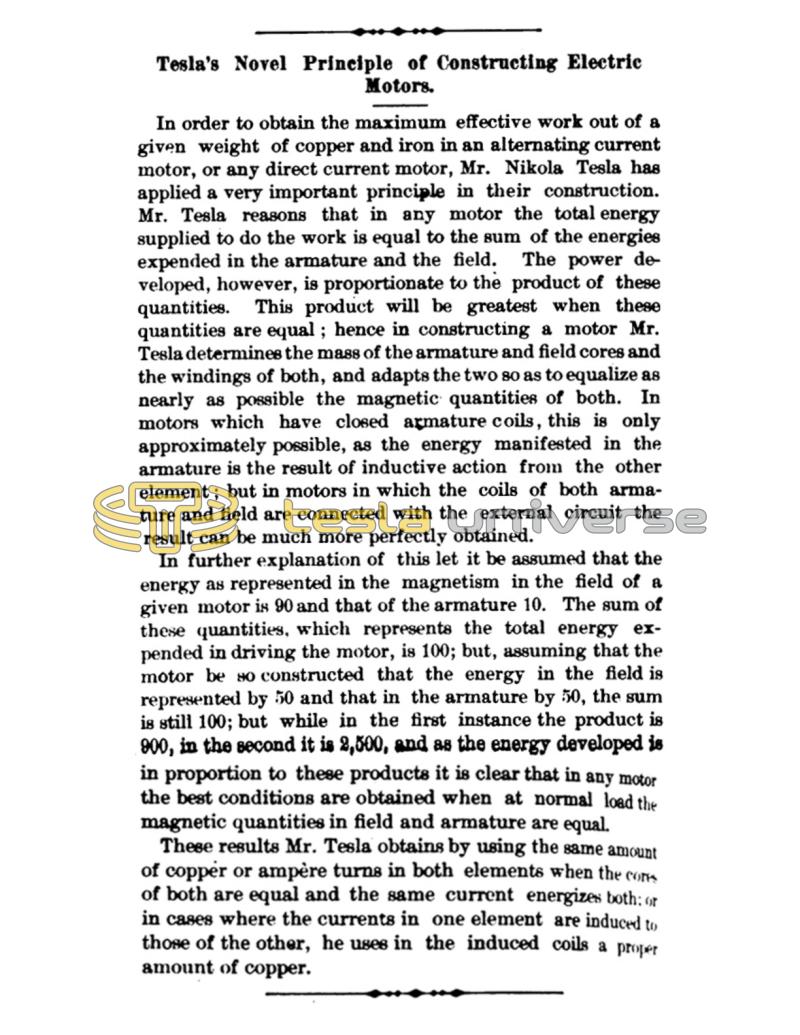
Nikola Tesla Articles
Tesla's Novel Principle of Constructing Electric Motors
In order to obtain the maximum effective work out of a given weight of copper and iron in an alternating current motor, or any direct current motor, Mr. Nikola Tesla has applied a very important principle in their construction. Mr. Tesla reasons that in any motor the total energy supplied to do the work is equal to the sum of the energies expended in the armature and the field. The power developed, however, is proportionate to the product of these quantities. This product will be greatest when these quantities are equal; hence in constructing a motor Mr. Tesla determines the mass of the armature and field cores and the windings of both, and adapts the two so as to equalize as nearly as possible the magnetic quantities of both. In motors which have closed armature coils, this is only approximately possible, as the energy manifested in the armature is the result of inductive action from the other element; but in motors in which the coils of both armature and field are connected with the external circuit the result can be much more perfectly obtained.
In further explanation of this let it be assumed that the energy as represented in the magnetism in the field of a given motor is 90 and that of the armature 10. The sum of these quantities, which represents the total energy expended in driving the motor, is 100; but, assuming that the motor be so constructed that the energy in the field is represented by 50 and that in the armature by 50, the sum is still 100; but while in the first instance the product is 900, in the second it is 2,500, and as the energy developed is in proportion to these products it is clear that in any motor the best conditions are obtained when at normal load the magnetic quantities in field and armature are equal.
These results Mr. Tesla obtains by using the same amount of copper or ampère turns in both elements when the cores of both are equal and the same current energizes both; or in cases where the currents in one element are induced to those of the other, he uses in the induced coils a proper amount of copper.
